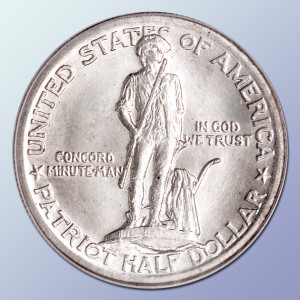Rebels, Riders, Runners and Patriots’ Day
Patriots’ Day is celebrated in April in three states: Massachusetts, Wisconsin, and Maine (although Maine refers to it as Patriot’s Day – note the apostrophe). For those of you who watched the History Channel’s miniseries Sons of Liberty, which was short on facts but large in drama and action, you have a good idea of what the holiday is all about. It marks the start of the American Revolution.
Boston political group
Sons of Liberty
In Boston, there really was a group called the Sons of Liberty. It began in 1765 as the Loyal Nine, nine merchants who were against the Stamp Act. Their name Sons of Liberty came from a speech given in British Parliament by an Irishman who defended the colonists and referred to them as “sons of liberty.” By the end of 1765, the Sons of Liberty groups had spread to every colony.
Redcoats ordered to shoot Boston rebels on sight
In February 1775, the British Parliament announced the colony of Massachusetts was in rebellion. It gave the redcoats in the colony permission to shoot any suspected rebels on sight, and sent orders to General Gage to arrest John Hancock and Samuel Adams. On the evening of April 18th, Dr. Warren sent a message to William Dawes and Paul Revere asking them to ride to Lexington and Concord. The pair went by different routes to make certain the message would get through. But before Revere left, he sent two men to the Old North Church. There they hung 2 lighted lanterns letting patriots in Charlestown know the British were coming by “sea,” the shorter route. At sunrise on April 19th, a small group of colonial militia faced down 700 British redcoats at Lexington, MA and again at Concord, firing the shot that was heard around the world!
Battles of Lexington and Concord celebrated on silver half dollar

1925 Lexington-Concord Sesquicentennial half dollar
These two encounters ignited the American Revolution and 150 years later, the showdown was recognized by the 90% silver 1925 Lexington-Concord Sesquicentennial half dollar. Designed by Chester Beach, this one-year commemorative marked the anniversary of those important battles. Both towns had input on the design. The obverse shows the Minuteman statue found in Concord, while the dual-dated 1775-1925 reverse shows the Belfry at Lexington, whose bell sounded the warning that early April morning.
From marathons to colonial reenactments
Patriots Day is a relatively new holiday. It came into existence in 1894, and replaced Fast Day, which dated to colonial times. In 1896, when the Olympic games were revived in Athens, a foot race named the “marathon” was held. A year later, the Boston Athletic Association introduced the Boston Marathon, a race originally intended to follow the route the patriots used from Concord through Lexington to Boston, and held on April 19th, the same day as the historic battles and holiday. However the route was too short and organizers moved it to meet the 24.5-mile requirement (changed to 26.2 miles in 1906). For that first race though, bicyclists dressed as militiamen rode alongside runners, handing out lemons, water and damp handkerchiefs. Today thousands of runners fight their own personal battles against fatigue and the time clock, while miles away in Lexington and Concord modern-day militias dressed in colonial garb reenact those very first battles that set us on the road to freedom.

Minute Men preparing to fight the British troops on Battle Road in Concord, MA during a reenactment for the Patriots’ Day celebration.




